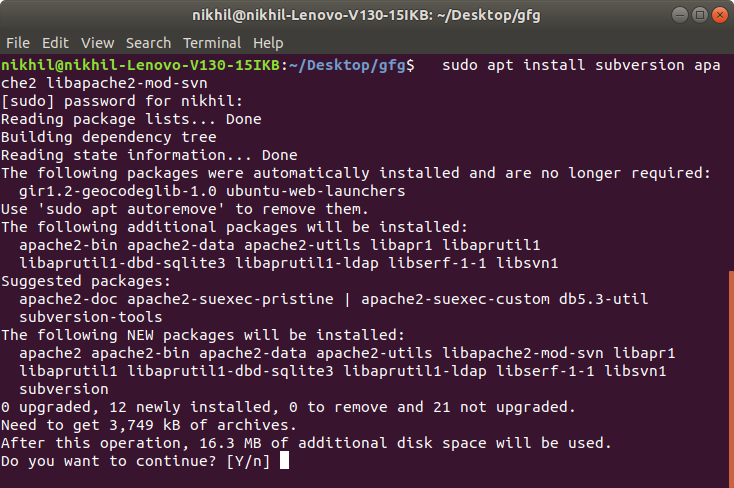
- #Configure svn server to preserve file permissions how to#
- #Configure svn server to preserve file permissions install#
- #Configure svn server to preserve file permissions download#
#Configure svn server to preserve file permissions install#
You can uncomment the default harry and sally users to play with, or add your own:Īs of Subversion 1.4, you can easily install Subversion as a Windows service, so it's always available.

Next, add some users to the conf/passwd file. Within that newly created folder, uncomment the following lines in the conf/nf file by removing the pound character from the start of each line: Let's create our first source repository, which is effectively a system path. Note that the installer adds c:svnbin to your path, so you can launch a command prompt and start working with it immediately. I recommend overriding the default install path and going with something shorter:
#Configure svn server to preserve file permissions download#
The first thing we'll do is download the latest Subversion Windows binary installer. It'll take all of 30 minutes, tops, I promise. free?Īllow me to illustrate how straightforward it is to get a small Subversion server and client going on Windows. Beyond that, source control is source control, as long as you're not using Visual SourceSafe. I'm not necessarily advocating Subversion there are plenty of other great source control systems out there - but few can match the ubiquity and relative simplicity of Subversion.

#Configure svn server to preserve file permissions how to#
Read our next article How to Backup and Restore SVN Repository in Linux.When it comes to readily available, free source control, I don't think you can do better than Subversion at the moment. Change with your system hostname, domain name or IP address. Use HTTP URLs to access your repository in the browser. Save the file and restart the Apache service to apply the new configuration. sudo vi /etc/apache2/mods-enabled/dav_svn.conf You just need to make necessary changes to it. Subversion Apache module package creates an configuration file /etc/apache2/mods-enabled/dav_svn.conf. sudo htpasswd -m /etc/apache2/dav_svn.passwd user1 sudo htpasswd -m /etc/apache2/dav_svn.passwd user2 Step 5 – Configure Apache with Subversion To create additional users, use following commands. Sudo htpasswd -m /etc/apache2/dav_svn.passwd admin

These users will use for authentication of svn repositories for checkout, commit processes. Now create first svn user in /etc/apache2/dav_svn.passwd file. Sudo chown -R www-data:www-data /var/lib/svn Also, set the required permissions on newly created directories. Use the following commands to create your first svn repository with name myrepo. sudo apt-get install subversion libapache2-mod-svn libapache2-svn libsvn-devĪfter installation, enable required Apache modules and restart Apache service. Also, install svn module for Apache libapache2-mod-svn packages on your system. Use the following command to install subversion packages and their dependencies. Skip this step if you already have Apache web server on your system.

Step 1 – Install Apacheįirst of all, you need to install the Apache webserver to access the svn server using HTTP URLs. This article will help you for step by step setup of Subversion (svn) server on Ubuntu 18.04 LTS & 16.04 LTS systems. You can always go back, look at and get the contents of previous revisions. Any time you change, add or delete a file or folder that you manage with Subversion, you commit these changes to your Subversion repository, which creates a new revision in your repository reflecting these changes. It helps you keep track of a collection of files and folders. Subversion is an open-source version control system.


 0 kommentar(er)
0 kommentar(er)
